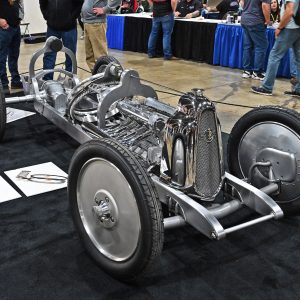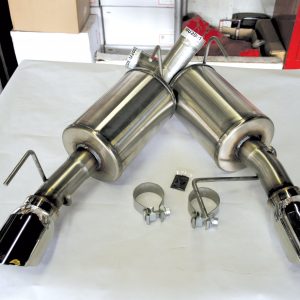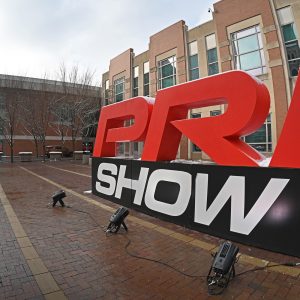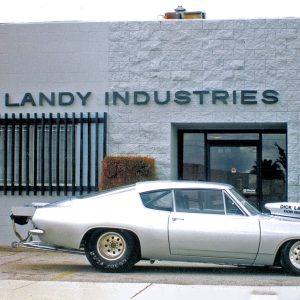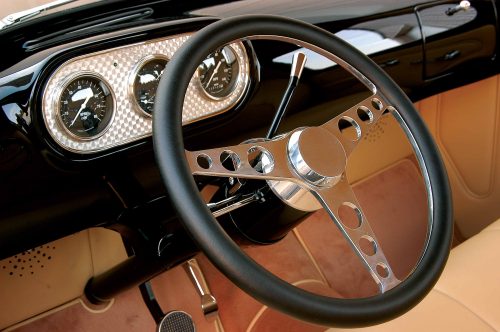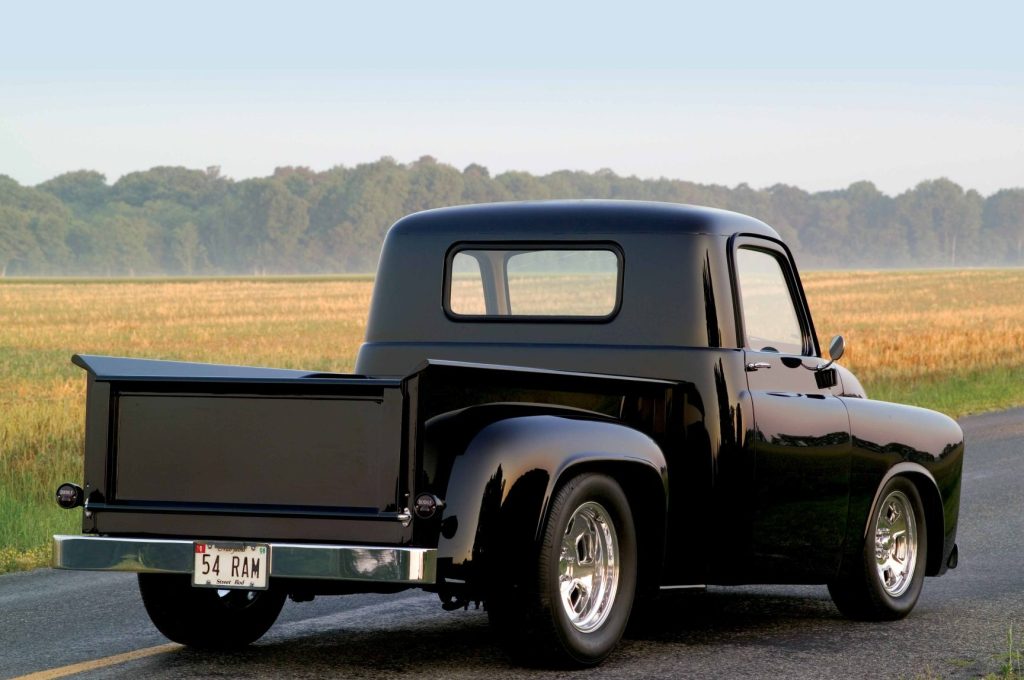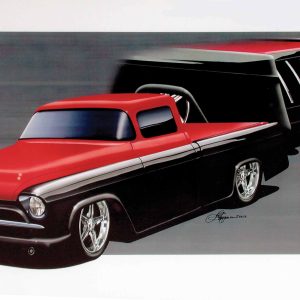
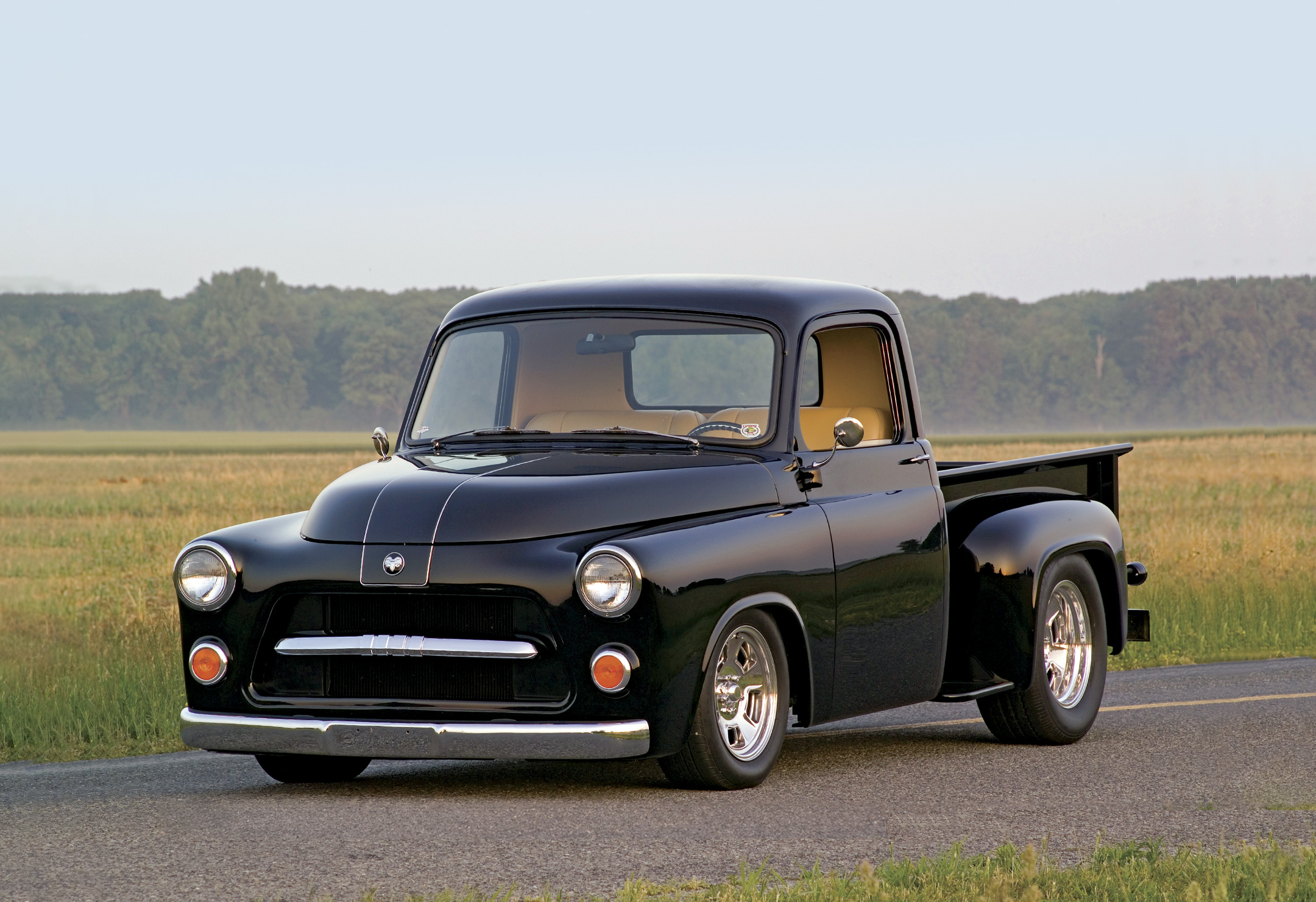

THE AUTO BUILDER
Featured
- All Post
- 20 High Priority - SR Super Rod
- Builds
- 25 High Priority - FB Ford Builder
- Cars
- 30 High Priority - AR American Rodder
- 01 Post Status
- 35 High Priority - RD Rodders Digest
- 40 High Priority - OTR On the Road
- 45 High Priority - SRB Street Rod Builder
- 50 High Priority - TB Truck Builder
- 55 High Priority - BSCENE Buckaroo Scene
- 60 High Priority - FPB Family Power Boat
- Trucks
- Swaps
- Performance Boats
- _000 Home Sliders
- Builders
- 00 Sidebars
- Manufacturers
- 05 High Priority - HCI Hot Compact Imports
- 05 Publications
- 10 High Priority - CR Chevy Rumble
- Back
- Chassis
- Engine
- Fuel System
- Electrical
- Exhaust
- Transmission / Drivetrain
- Suspension
- Steering
- Brakes
- Wheels and Tires
- Interior
- Exterior
- Accessories
- Power Adders
- Back
- Chassis
- Engine
- Fuel System
- Electrical
- Exhaust
- Transmission / Drivetrain
- Suspension
- Steering
- Brakes
- Wheels and Tires
- Interior
- Exterior
- Accessories
- Power Adders
- Back
- Chassis
- Engine
- Electrical
- Exhaust
- Fuel System
- Transmission / Drivetrain
- Suspension
- Steering
- Brakes
- Wheels and Tires
- Interior
- Exterior
- Accessories
- Power Adders
- Back
- Chassis
- Engine
- Electrical
- Exhaust
- Fuel System
- Transmission / Drivetrain
- Suspension
- Steering
- Brakes
- Wheels and Tires
- Interior
- Exterior
- Accessories
- Power Adders
- Back
- Chassis
- Engine
- Fuel System
- Electrical
- Exhaust
- Transmission / Drivetrain
- Suspension
- Steering
- Brakes
- Wheels and Tires
- Interior
- Exterior
- Accessories
- Power Adders
- Back
- Chassis
- Engine
- Fuel System
- Electrical
- Exhaust
- Transmission / Drivetrain
- Suspension
- Steering
- Brakes
- Wheels and Tires
- Interior
- Exterior
- Accessories
- Power Adders
- Back
- Chassis
- Engine
- Fuel System
- Electrical
- Exhaust
- Transmission / Drivetrain
- Suspension
- Steering
- Brakes
- Wheels and Tires
- Interior
- Exterior
- Accessories
- Power Adders
- Back
- Engine
- Fuel System
- Electrical
- Outdrives
- Steering
- Interior
- Accessories
- Power Adders
- Exterior and Hull
- Back
- Chassis
- Engine
- Electrical
- Exhaust
- Fuel System
- Transmission / Drivetrain
- Suspension
- Steering
- Brakes
- Wheels and Tires
- Interior
- Exterior
- Accessories
- Power Adders
- Back
- Chevrolet
- Cadillac
- Pontiac
- AMC
- Buick
- Jeep
- Lincoln
- Ford
- Honda
- GMC
- BMW
- Mitsubishi
- Dodge
- Nissan
- Chrysler
- Subaru
- Toyota
- Plymouth
- Mercury
- Volvo
- Volkswagen
- Oldsmobile
- Acura
- Back
- 05 Pub HCI Hot Compact Imports
- 15 Pub 4x4 4x4 Builder
- 20 Pub SR Super Rod
- 25 Pub FB Ford Builder
- 30 Pub AR American Rodder
- 35 Pub RD Rodders Digest
- 40 Pub OTR On the Road
- 55 Pub BSCENE Buckaroo Scene
- 10 Pub CR Chevy Rumble
- 50 Pub TB Truck Builder
- 60 Pub FPB Family Power Boat
- 45 Pub SRB Street Rod Builder
- Back
- Chip Foose
- Ring Brothers
- Jack Fuller
- Bob Cullipher
- Jerry Nichols
- Bobby Alloway
- Jesse James
- Carl Casper
- J.F. Launier
- Steve Sellers
- Boyd Coddington
- Rad Rides by Troy
- Cal Auto Creations
- George Barris
- West Coast Customs
- Back
- Street Rods
- Hot Rods
- Late Model
- Drag Race
- Handling
- Compact Cars
- Chassis
- Engine
- Fuel System
- Electrical
- Exhaust
- Transmission / Drivetrain
- Suspension
- Steering
- Brakes
- Wheels and Tires
- Interior
- Exterior
- Accessories
- Power Adders
- Chassis
- Engine
- Fuel System
- Electrical
- Exhaust
- Transmission / Drivetrain
- Suspension
- Steering
- Brakes
- Wheels and Tires
- Interior
- Exterior
- Accessories
- Power Adders
- Chassis
- Engine
- Electrical
- Exhaust
- Fuel System
- Transmission / Drivetrain
- Suspension
- Steering
- Brakes
- Wheels and Tires
- Interior
- Exterior
- Accessories
- Power Adders
- Chassis
- Engine
- Electrical
- Exhaust
- Fuel System
- Transmission / Drivetrain
- Suspension
- Steering
- Brakes
- Wheels and Tires
- Interior
- Exterior
- Accessories
- Power Adders
- Chassis
- Engine
- Electrical
- Exhaust
- Fuel System
- Transmission / Drivetrain
- Suspension
- Steering
- Brakes
- Wheels and Tires
- Interior
- Exterior
- Accessories
- Power Adders
- Chassis
- Engine
- Fuel System
- Electrical
- Exhaust
- Transmission / Drivetrain
- Suspension
- Steering
- Brakes
- Wheels and Tires
- Interior
- Exterior
- Accessories
- Power Adders
- Back
- 05 Post Imported
- 20 Post Missing Images (All)
- 25 Post Missing Images (Partial)
- 15 Post In Progress
- 30 Post Internal Review
- 40 Post On Hold
- 50 Post Approved
- 10 Post Images Imported
- 17 Post Missing TXT Files
- 18 Post Missing PDF Files
- 27 Post Missing Content
- Back
- Chassis
- Engine Swaps
- Interior Swaps
- Driveline
- Back
- Street Trucks
- OffRoad Trucks
- Chassis
- Engine
- Fuel System
- Electrical
- Exhaust
- Transmission / Drivetrain
- Suspension
- Steering
- Brakes
- Wheels and Tires
- Interior
- Exterior
- Accessories
- Power Adders
- Chassis
- Engine
- Fuel System
- Electrical
- Exhaust
- Transmission / Drivetrain
- Suspension
- Steering
- Brakes
- Wheels and Tires
- Interior
- Exterior
- Accessories
- Power Adders
- Back
- 01 Sidebar Left
- 01 Sidebar Right
Spotlighter
POPULAR READS
The Ugly Duckling
It’s Not So Ugly Now, As The Hot Rod Garage Teams Up With Owner Charles Black To Build An Awesome Ram
Author

Josh Kaylo
Story & Photography
In 1949 Dodge introduced a new truck for its light- and medium-duty pickups. Interestingly, this was the first new design since 1939, so you might say the Ram was getting a bit long in the tooth. This fact was not lost on needy pickup truck buyers, considering that both Ford and Chevrolet had introduced new designs two years earlier, and both were more refined and more spacious. Dodge had to come up with something fast, and it did. The Dodge sported new sheetmetal, a roomier cab and improved weight distribution, thanks to a refined chassis and a change in wheelbase.
The new Dodge sported a novel butterfly-style-opening hood that allowed the engine to be accessed in a variety of ways. The new design was an immediate hit, with more than 118,364 being produced in ’48 and ’49. This design continued for six years before Dodge decided to make a real change to its truck line.
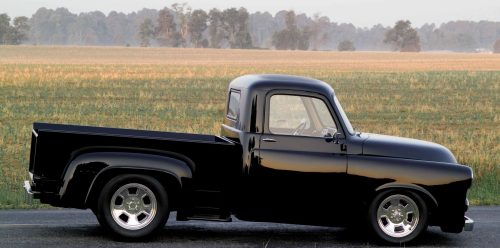 The 1954 Ram sported the same sheetmetal as in previous years, with the exception of the cab styling, which featured a new, one-piece, curved windshield for improved vision and a more modern look. Also for ’54, Dodge introduced an all-new V-8 for the first time in light- and medium-duty pickups. While more than 35,000 of these trucks were produced in ’54, they were not the most popular of the Big Three and saw a lot of hard work throughout their lifespan, as Dodge built a reputation for a no-nonsense work truck.
The 1954 Ram sported the same sheetmetal as in previous years, with the exception of the cab styling, which featured a new, one-piece, curved windshield for improved vision and a more modern look. Also for ’54, Dodge introduced an all-new V-8 for the first time in light- and medium-duty pickups. While more than 35,000 of these trucks were produced in ’54, they were not the most popular of the Big Three and saw a lot of hard work throughout their lifespan, as Dodge built a reputation for a no-nonsense work truck.
We had the opportunity to shoot one of these great, unusual-looking trucks. Because of the hard lives most were subjected to, they are more rare than other mid-’50s pickups. This one didn’t have such a tough existence. Back in ’54 Charles Black’s father-in-law purchased this newly designed ’54 Dodge pickup. He liked the cool wraparound, one-piece, curved windshield and thought it looked great. The truck lived its entire life in Savannah, Georgia, where it saw daily work going to and from town hauling kids and necessary items for the family. For years Black tried to purchase the classic pickup from his father-in-law for a project, but always with the same response: “No, I am going to hang onto the old Dodge.” That was until 1983, when a deal was struck and Black traded his dog and $300 for the Dodge. He now had the project pickup he’d been longing for.
Black worked on the truck for many years before deciding (in 2003) that the time had come to do it right. He began reconstruction by loading up the truck and heading off to the Hot Rod Garage (HRG) in Denton, Maryland, where the project took a giant step forward. Black met with the Hot Rod Garage crew, who started the redo with a Fat Man IFS, a 9-inch rear and a 350/350 engine combo. Impressed with their workmanship on the chassis, Black met with owner Ray Bartlett, who frankly told him that the Dodge was the ugliest truck he had ever seen, but when it left the shop it would look like new—and so the entire build began.
The first order of work was to remove the GM drivetrain that HRG had previously installed. Bartlett talked Black into a Mopar 360 mated to a 727 Torqueflite for the tired Dodge. The engine and trans mounts were cut from the chassis and the new units were installed. During the initial build, HRG had installed the Fat Man IFS with 2-inch dropped spindles, disc brakes and a power rack for increased handling and driveability. The stock leaf springs were moved inboard and a 9-inch Ford was mounted in place of the stock differential. HRG C-notched the rear framerails for additional clearance, which helped the Dodge achieve the ground-scraping stance seen here.
Black initially chose a GM crate motor for his Dodge project, which HRG installed in the first stage of the build, but once Ray Bartlett and Black spoke more about the Dodge the decision was made to install Dodge power between the framerails. With the Chevy engine out of the way, Bartlett and the crew began with a new Mopar 360 crate engine. The 360 would provide plenty of power while still keeping the truck Mopar powered. HRG dressed the crate engine with a Holley Street Avenger carb, Mopar finned valve covers and air cleaner, MSD 6A ignition and Sanderson headers. Backing the 360 is a ’72-model 727 Torqueflite complete with finned trans cooler and 2,200-rpm-stall converter built by Easton Transmissions.
Everyone knows that if you plan to paint a vehicle black it had better be beyond perfect. Henry Stewart and Gary Hunter of HRG performed the extensive bodywork to bring the Dodge to better-than-new condition. The dynamic duo began by fabricating a new firewall and floorboard to clear the larger-than-stock Mopar 360. Wanting to achieve the smoothest look possible, Stewart and Hunter filled the rear quarter windows and drip rails of the classic hauler. With the cab modifications now finished, work could begin on the nose of the truck. The front fenders and grille panel were combined to make a true one-piece unit, while HRG redesigned the three-piece butterfly hood into a one-piece hood.
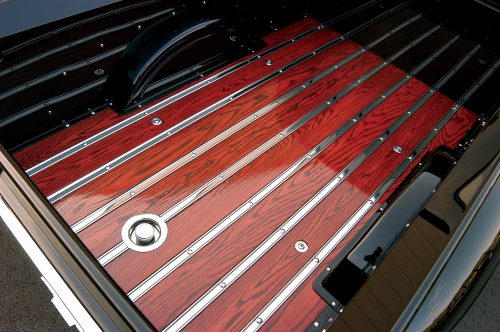 Fabrication didn’t stop there, as new inner fenders were fabricated to enhance the eye appeal and smooth looks of the engine compartment. Dodge did a great job designing the truck, but HRG did a spectacular job of finishing it. The factory front bumper was a bit much, so it was shaved smooth and narrowed to better wrap the nose of the Dodge. Out back the ’56 F-100 bumper cleans up the rear and is flanked by a set of ’33 Dodge taillights.
Fabrication didn’t stop there, as new inner fenders were fabricated to enhance the eye appeal and smooth looks of the engine compartment. Dodge did a great job designing the truck, but HRG did a spectacular job of finishing it. The factory front bumper was a bit much, so it was shaved smooth and narrowed to better wrap the nose of the Dodge. Out back the ’56 F-100 bumper cleans up the rear and is flanked by a set of ’33 Dodge taillights.
Inside the bed, the beautiful stained and polished floor looks much better than what originally left the Dodge assembly plant. The beautiful and flawless DuPont Super Jet Black paint that adorns the pickup was sprayed by Jason Lester at HRG. Filling the massive Dodge fenderwells are Billet Specialties Legacy 16×7 and 17×8 wheels wrapped with BFGoodrich rubber.
The interior of the Dodge is where Dean Alexander at HRG really came through. While cardboard door and kick panels may have been cutting-edge for ’54, leather is the name of the game today. This Dodge is shod in camel Ultraleather, a beautiful shade of light tan that covers nearly every inch of the vintage truck’s interior. The dash of the truck was smoothed and features a custom engine-turned dash panel, with a trio of black-face Classic Instruments gauges providing need-to-know information. You may not notice the glovebox at first glance, but it is now located in the “usual” spot facing the passenger, moved from its original location in the center of the dash. While sitting in the Glide Engineering bench seat, steering will be handled by a new Budnik three-spoke steering wheel. Cooling off the cab is a Vintage Air Gen III system, providing cool air in the summer and warm air in winter.
No matter which angle you view the ’54 from it is a beautiful work of art, displaying fine craftsmanship inside and out. The workhorse Dodge has come a long way from the days of basic transportation, as this showcases everything that has made classic pickups so popular today. So far Black and his ’54 Dodge have taken home a truckload of awards from around the country, including a Goodguys Truckville pick as well as being a Goodguys Truck of the Year finalist. Best of all, once the summer events were over, Black called Bartlett and proclaimed, “I guess my truck isn’t so ugly!” TB

